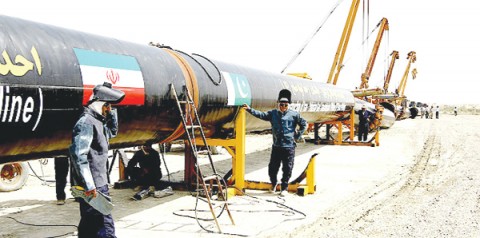
September 13-2013
A Chinese firm that was expected to fund about a third of the cost of the new gas pipeline carrying Iranian natural gas across Pakistan has backed out, leaving the pipeline hanging in mid-air.
Pakistan is hoping Iran will find the entire pipeline—since that may be the only way to get the pipeline built and Iranian gas sold.
The Chinese firm had offered financing of $500 million toward the overall cost, estimate to be from $1.5 billion to $1.8 billion.
The firm pulled out after the Pakistani government expressed its unwillingness to extend the bid validity period.
“After the Chinese firm’s exit from the project, the government is now banking on Iran to fully fund the laying of Pakistan’s portion of the pipeline,” a source told The Express Tribune of Pakistan last week.
Pakistan got a new government in May and Iran in August. That double transition has reportedly delayed talks between the two sides on financing.
Iran has already committed to provide $500 million toward the financing. But it earlier rejected Pakistani requests to provide more.
“The two sides are expected to meet this month to take up the proposal that Iran gives the entire financing,” one Pakistani official told the Express Tribune.
The Chinese firm that has now pulled out, Panyn Chu King Steel Limited, was to provide the pipe at $1,650 per ton.
In a press conference held recently, Petroleum Minister Shahid Khaqan Abbasi also said Pakistan would renegotiate the gas price with Iran. In other words, Pakistan is asking Iran both to capitalize the entire project and to agree to a lower price for the gas it then provides.
Under the project, Pakistan would import 750 million cubic feet of gas per day at the start. That could later be increased to one billion cubic feet.
